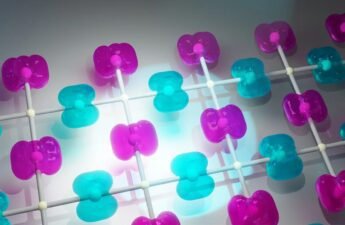In this post I will talk about a very important element to modern technologies. The use of lithium allowed the improvement of batteries. The best batteries have lithium.
Properties
It is the lightest of metals, has a density of 0.535 g/cm^3. It is very reactive metal with water for being monovalent (atom has only one electron to share).
The chemical reaction when it reacts with water.
2Li+2H_{2}O\rightarrow 2LiOH + H_{2}
This element is very soft, can easily cut with a knife. It is a good electricity conductor. When the lithium salt is burned, the flame has a red color.

When the combustion is more violent, the flame is white and bright.

Biggest reserves
The biggest reserves stay in Chile and Bolivia. There are also considerable reserves in China, Australia, Brazil, Portugal, USA, Canada and Zimbabwe.

Extraction
In the nature, it is present in form of petalite (LiAlSi_{4}O_{10}).

Other minerals are the lepidolite (KLi_{2}Al(Al,Si)_{3}O_{10}(F,OH)_{2}).
 And the spodumene (LiAl(Si_{2}O_{6})).
And the spodumene (LiAl(Si_{2}O_{6})).

This element also can be extracted from brines of some salted water and stay in the Sun to evaporation. The ore is calcined to be mixed with sulfuric acid. It is created the lithium sulfate which is purified and separated to be treated with sodium carbonate creating the lithium carbonate (Li_{2}CO_{3}). The lithium carbonate has some applications, for that part of it goes to commerce. The other part is treated with calcium hydroxide to produce lithium hydroxide (LiOH) which also has it applications. Here is the production process of carbonate and hydroxide of this metal.

To produce the metallic lithium, mix hydrochloric acid with lithium carbonate to produce lithium chloride. And an electrolysis in the chloride produces the metal. Below we have reactions of oxidation and reduction respectively.
2Cl - 2e^-\rightarrow Cl_{2}
Li^+ + e^-\rightarrow Li

Environmental impact
Extract ores from mines causes the typical environmental impact from mining. However the most part is extracted from brines which don’t need much water and it is made in places where there is very few wildlife, therefore the environmental impact is much lower.
Some applications
In addition to be used as anode in the best batteries, can be used in the metallic alloys of aluminum, cadmium, copper and manganese to aeronautic industry. The small addition of lithium carbonate can make glass and ceramics stronger. The lithium hydroxide is used in submarines, spaceships and space stations to extract the carbon dioxide from the crew and debug the air. This graphic shows other applications.





Excellent site very cool! another excellent subject i loved the article.
Your website is amazing congratulations, visit mine too:
https://strelato.com
.
Thank you. I already visited your website.